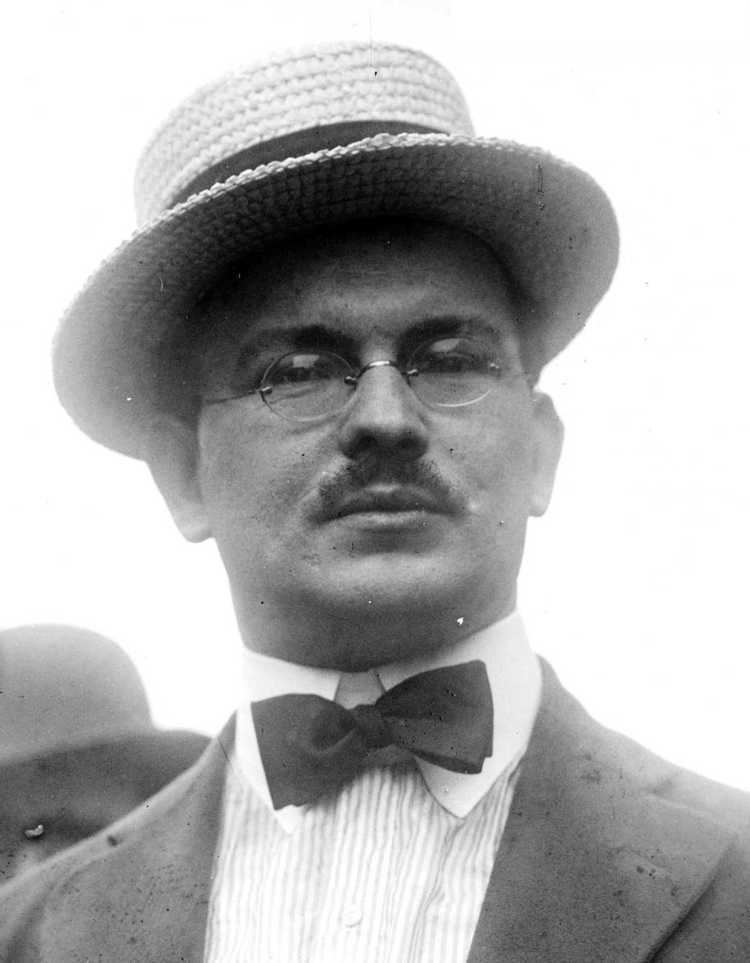Ethnicity Austrian-American Years active 1931–1965 | Name Frank Tannenbaum Role Historian | |
 | ||
Awards Guggenheim Fellowship for Humanities, US & Canada Books Slave and citizen, Mexico - the struggle for peace an, The Mexican agrarian r, A philosophy of labor, Ten keys to Latin America | ||
Slave and citizen by frank tannenbaum israelites captured and sold
Frank Tannenbaum (4 March 1893 – 1 June 1969) was an Austrian-American historian, sociologist and criminologist, who made significant contributions to modern Mexican history during his career at Columbia University.
Contents
- Slave and citizen by frank tannenbaum israelites captured and sold
- Early life
- Academic career
- Legacy
- Books
- Articles in Foreign Affairs
- Articles in other publications
- References

Early life
Tannenbaum was born in Austria on 4 March 1893. His Eastern European Jewish family immigrated to the United States in 1905. He ran away from home as an adolescent and never finished high school. He worked at a number of menial jobs and became involved in radical labor politics of the era.
As a young man, he worked a bus-boy. During the economic crisis of 1913–1915, he became a leader of the Industrial Workers of the World. In January 1914, Tannenbaum, then 21 years old and a member of the IWW-affiliated Waiter's Industrial Union, proposed a campaign of demanding relief from New York City churches. Starting in February, he led masses of workers to churches, disrupted services, and demanded that they be given food and shelter. Although most churches complied, the New York press, notably the New York Times, decried Tannenbaum and the Wobblies. On March 4, Tannenbaum led a group of unemployed workers from Rutgers Square to the Catholic St. Alphonsus Church on West Broadway. There, they were met by a phalanx of police and the parish rector, who refused their demands. Tannenbaum and 190 other protesters were arrested; Tannenbaum was charged with inciting to riot and given an extraordinary $5,000 bail. At trial one protester received 60 days in jail, four 30 days, three 15 days, and the rest were let go; Tannenbaum was sent to jail for a year and fined $500. He spent the year on Blackwell's Island. When he got out of jail, Tannenbaum remained active in the IWW, and he was arrested alongside Elizabeth Gurley Flynn and Alexander Berkman during the Bayonne refinery strikes of 1915–1916, in Bayonne, New Jersey.
Emma Goldman described his arrest and imprisonment in her memoirs, Living My Life (1931):
We all had loved Frank for his wide-awakeness and his unassuming ways. He had spent much of his free time in our office, reading and helping in the work connected with Mother Earth. His fine qualities held out the hope that Frank would some day play an important part in the labour struggle. None of us had expected however that our studious, quiet friend would so quickly respond to the call of the hour.
After Bayonne, Tannenbaum soon abandoned his youthful radicalism.
Academic career
With the help of several philanthropists, he attended Columbia University, where classmates included Samuel Roth. In 1921, Tannenbaum received his bachelor's degree from Columbia. He received his Ph.D. in economics from the Brookings Institution (undated). He then served in the U.S. Army, stationed in the south.
He then moved to Mexico, where he conducted research on rural education and served as an adviser to President Lázaro Cárdenas.
In 1931, he reported to the Wickersham Commission study on Penal Institutions, Probation and Parole (Volume 9).
In 1932, he returned to the United States to teach criminology at Cornell University.
In 1935 he joined the faculty at Columbia, where he became professor of Latin American history. A notable student at Columbia was Robert J. Alexander, who went on to become professor of history at Rutgers University, specializing in the trade union movement in Latin America and dissident communist political parties.
He retired from Columbia University in 1965. He died in New York City in 1969.
Legacy
Tannenbaum helped formulate legislation that established the Farm Security Administration.
His conception of the "Dramatization Of Evil" led to the further development of the symbolic interactionist labeling theory, widely used in both sociology and social psychology.
Summarizing this theory's impact, Kerry Townsend has stated, "Frank Tannenbaum’s theory, dramatization of evil, explains the making of a criminal and the lure of criminal behavior." Townsend places Tannenbaum's theoretical thought within the theory of "Symbolic Interactionism," whose perspective emphasizes "individual levels of interaction, began to emerge spearheaded by the writings of George Herbert Mead and Charles Horton Cooley," which formed the basis of Societal Reaction theories of which Tannenbaum's form part.
Tannenbaum's theory remains important in criminology studies at universities including Florida State University, the University of Maryland
Books
Articles in Foreign Affairs
Tannenbaum published a number of articles in Foreign Affairs:
